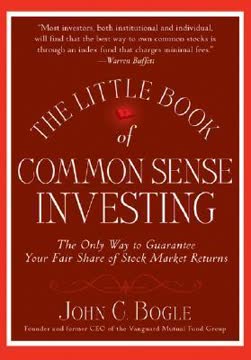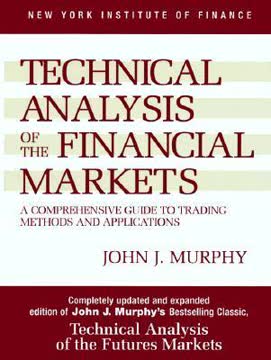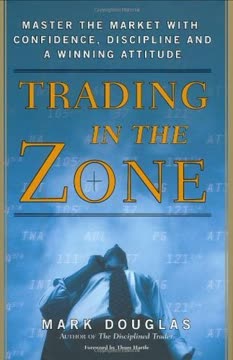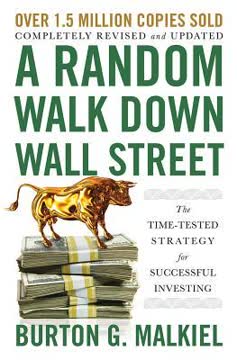Key Takeaways
1. Currencies: The New Frontier of Investing and Trading
The forex market trades 24 hours a day, which means that the points in the charts are created using more samples, increasing its statistical significance.
Unparalleled opportunities. The foreign exchange (forex) market has emerged as a dynamic arena for investors and traders alike. With a daily turnover exceeding $4 trillion, it offers unparalleled liquidity and accessibility. Unlike traditional stock markets, forex operates 24 hours a day, five days a week, allowing participants to react to global events in real-time.
Diverse participants. The forex market attracts a wide range of participants, from individual retail traders to large financial institutions and central banks. This diversity creates a complex ecosystem where various factors, including economic indicators, geopolitical events, and market sentiment, influence currency movements. Understanding these dynamics is crucial for anyone looking to navigate the forex landscape successfully.
Risk and reward. While the potential for profit in forex trading is significant, it comes with considerable risks. The high leverage offered by many forex brokers can magnify both gains and losses. Therefore, it's essential for traders to approach the market with a well-defined strategy, robust risk management techniques, and a thorough understanding of market mechanics.
2. Understanding Forex Market Basics and Dynamics
Currencies are basically little interest-bearing commodities, and almost every country has an official interest rate that determines the borrowing cost of the government, its banks, and citizens—this is the rate that sets your credit card and mortgage payments.
Currency pairs. At the heart of forex trading are currency pairs, which represent the relative value of one currency against another. The most commonly traded pairs include:
- EUR/USD (Euro/US Dollar)
- USD/JPY (US Dollar/Japanese Yen)
- GBP/USD (British Pound/US Dollar)
- USD/CHF (US Dollar/Swiss Franc)
Market drivers. Several key factors influence currency movements:
- Interest rates and monetary policy
- Economic indicators (GDP, inflation, employment)
- Political stability and geopolitical events
- Market sentiment and risk appetite
Market structure. The forex market operates as a decentralized, over-the-counter (OTC) market, with major financial centers acting as hubs for trading activity. This structure allows for continuous trading and contributes to the market's high liquidity and tight spreads.
3. Fundamental Analysis: Economic Indicators and News Events
When trading the news, there are three questions that we need to ask ourselves before every trade: Is the news important? Is the surprise large enough? And is the surprise in line with the market's sentiment?
Key economic indicators. Successful forex traders closely monitor a range of economic indicators that can impact currency values:
- Gross Domestic Product (GDP)
- Inflation rates (CPI, PPI)
- Employment data (Non-Farm Payrolls, Unemployment Rate)
- Retail Sales
- Manufacturing and Services PMIs
Central bank policies. Central bank decisions on interest rates and monetary policy are crucial drivers of currency movements. Traders pay close attention to policy statements, press conferences, and speeches by central bank officials for insights into future economic conditions and potential policy changes.
Geopolitical events. Political developments, elections, trade disputes, and international conflicts can significantly impact currency values. Staying informed about global news and understanding its potential implications for various currencies is essential for effective fundamental analysis in forex trading.
4. Technical Analysis: Chart Patterns and Indicators
Double Bollinger Bands are such a key component of my own trading that Chapter 8 is dedicated completely to understanding and using them to position into trades.
Chart patterns. Technical analysts use various chart patterns to identify potential trading opportunities:
- Head and Shoulders
- Double Tops and Bottoms
- Triangles (Ascending, Descending, Symmetrical)
- Flag and Pennant patterns
Technical indicators. Traders employ a wide range of indicators to analyze price trends and momentum:
- Moving Averages (Simple, Exponential)
- Relative Strength Index (RSI)
- Moving Average Convergence Divergence (MACD)
- Bollinger Bands
- Fibonacci Retracements
Timeframe analysis. Successful traders often analyze multiple timeframes to gain a comprehensive view of market trends and potential entry and exit points. This multi-timeframe approach helps in identifying both short-term trading opportunities and longer-term market direction.
5. Risk Management: The Key to Long-Term Success
Leverage is a wonderful drug when the trade moves in your direction, but it is pure poison when the market is aligned against you.
Position sizing. Proper position sizing is crucial for managing risk in forex trading. A common rule of thumb is to risk no more than 1-2% of your trading capital on any single trade. This approach helps protect your account from significant drawdowns and allows for sustainable trading over the long term.
Stop-loss orders. Implementing stop-loss orders is essential for limiting potential losses. Traders should place stop-losses at levels that align with their risk tolerance and the specific characteristics of the currency pair being traded. Trailing stops can also be used to protect profits as trades move in your favor.
Risk-reward ratio. Successful traders aim for a favorable risk-reward ratio on their trades, typically 1:2 or higher. This means that the potential profit on a trade should be at least twice the amount risked. By consistently applying this principle, traders can achieve profitability even with a win rate below 50%.
6. Developing a Profitable Trading Strategy
The secret to being successful in currency trading and life is to take things seriously—treat your trading like a business and not a recreational hobby.
Define your approach. Develop a clear trading strategy that aligns with your personality, risk tolerance, and available time. This may involve:
- Trend-following strategies
- Range-trading approaches
- Breakout trading
- News-based trading
Backtesting and optimization. Before implementing a strategy with real money, thoroughly backtest it using historical data. This process helps identify potential strengths and weaknesses in your approach. However, be cautious of over-optimization, which can lead to strategies that perform well in backtests but fail in live market conditions.
Continuous improvement. Regularly review and refine your trading strategy based on market performance and changing conditions. Keep a detailed trading journal to track your decisions, outcomes, and lessons learned. This practice facilitates continuous improvement and helps maintain discipline in your trading approach.
7. Avoiding Common Pitfalls and Scams in Forex
Whether it's a forex scam or a legitimate offer, use common sense and remember that there is no free lunch and fortunes aren't made overnight. If it sounds too good to be true, then it probably is.
Common scams. Be aware of prevalent forex scams:
- Signal provider scams
- Automated trading system scams
- Managed account scams
- Unregulated broker scams
Due diligence. Before engaging with any forex service or product:
- Research the company's background and regulatory status
- Be skeptical of unrealistic profit claims
- Verify track records and performance claims
- Understand the risks involved in leveraged trading
Legitimate resources. Focus on reputable sources for education and market information:
- Regulated brokers and their educational materials
- Financial news outlets (Bloomberg, Reuters, Financial Times)
- Official economic data sources (central banks, statistical agencies)
- Respected trading books and courses
8. The Psychology of Successful Trading
We trade with negative edge not because we think it is mathematically superior—we know that it is not. In fact, in order for the T1-T2 method to work, our strategy needs to be successful at least 60 to 70 percent of the time because trading more than one lot doubles the losers. We trade with negative edge because we know that it is psychologically more palatable, and trading at its core is always more psychological than it is logical.
Emotional control. Successful forex trading requires mastering your emotions. Fear and greed can lead to impulsive decisions and deviation from your trading plan. Develop techniques to maintain emotional equilibrium, such as:
- Meditation and mindfulness practices
- Regular breaks from trading screens
- Setting realistic expectations and goals
Discipline and patience. Adhering to your trading plan and having the patience to wait for high-probability setups is crucial. Avoid the temptation to overtrade or chase the market. Remember that preserving capital during unfavorable market conditions is just as important as capitalizing on opportunities.
Learning from mistakes. View losses and mistakes as learning opportunities rather than failures. Analyze your trades objectively, identify areas for improvement, and incorporate these lessons into your trading strategy. This growth mindset is essential for long-term success in the forex market.
9. Leveraging Technology in Forex Trading
Trading robots have become very popular over the past few years, and savvier traders have even learned to code their own trading strategies and create mini algos.
Trading platforms. Modern forex trading platforms offer a wide range of features:
- Real-time charting and analysis tools
- Automated trading capabilities
- Risk management features (e.g., stop-loss and take-profit orders)
- Mobile trading apps for on-the-go access
Algorithmic trading. Many traders use automated trading systems or algorithms to execute trades based on predefined criteria. While these can be powerful tools, it's crucial to thoroughly test and monitor any automated strategy to ensure its effectiveness in varying market conditions.
Data analysis and machine learning. Advanced traders are increasingly using data analytics and machine learning techniques to gain insights from market data. These approaches can help identify patterns and trends that may not be apparent through traditional analysis methods.
10. Continuous Learning and Adaptation in the Forex Market
Having this type of preparation and discipline would benefit all traders. Larson knew that he had only one opportunity to appear on the game show and therefore he needed to be as prepared as possible. However, unlike a game show contestant, you have the opportunity to trade every day.
Stay informed. The forex market is constantly evolving, influenced by global economic and political developments. Stay up-to-date with:
- Economic calendars and data releases
- Central bank policy decisions and communications
- Geopolitical events and their potential market impact
Skill development. Continuously improve your trading skills through:
- Reading books and articles on forex trading and economics
- Attending webinars and seminars
- Participating in trading forums and communities
- Practicing with demo accounts to test new strategies
Adapt to changing markets. Be prepared to adjust your trading approach as market conditions change. What works in one market environment may not be effective in another. Regularly review and refine your strategies to ensure they remain relevant and profitable in evolving market conditions.
Last updated:
FAQ
What's "The Little Book of Currency Trading" about?
- Overview: "The Little Book of Currency Trading" by Kathy Lien is a guide to understanding and profiting from the forex market. It provides insights into currency trading strategies and the dynamics of the forex market.
- Target Audience: The book is aimed at both novice and experienced traders who want to learn how to navigate the forex market effectively.
- Content Structure: It covers a range of topics from basic concepts to advanced trading strategies, including risk management and avoiding common pitfalls.
- Practical Advice: The book offers practical advice on how to develop a trading plan, manage emotions, and use technical and fundamental analysis to make informed trading decisions.
Why should I read "The Little Book of Currency Trading"?
- Comprehensive Guide: It offers a comprehensive guide to currency trading, making it suitable for both beginners and seasoned traders.
- Practical Strategies: The book provides practical strategies and tools that can be applied in real-world trading scenarios.
- Risk Management: It emphasizes the importance of risk management and provides tips on how to protect your investments.
- Avoiding Scams: The book also educates readers on how to avoid common scams in the forex market, ensuring a safer trading experience.
What are the key takeaways of "The Little Book of Currency Trading"?
- Trend Following: One of the key takeaways is the importance of following trends in the forex market to maximize profits.
- Risk Management: The book stresses the significance of managing risk and setting stop-loss orders to protect against significant losses.
- Trading Plan: Developing a solid trading plan is crucial for success, as it helps traders stay disciplined and avoid emotional decision-making.
- Avoiding Mistakes: The book outlines common mistakes traders make and provides strategies to avoid them, enhancing the likelihood of success.
What is the Double Bollinger Band Method in "The Little Book of Currency Trading"?
- Definition: The Double Bollinger Band Method is a technical analysis tool used to identify trends and potential entry and exit points in the forex market.
- How It Works: It involves using two sets of Bollinger Bands to determine whether a currency pair is in a trend or range and to identify the strength of the trend.
- Application: Traders can use this method to find value within a trend and to determine when a trend might be exhausting.
- Benefits: This method provides a clear framework for making trading decisions, helping traders to capitalize on market movements effectively.
How does Kathy Lien suggest managing risk in forex trading?
- High-Probability Trades: Lien emphasizes the importance of sticking with high-probability trades by aligning fundamental, technical, and sentiment factors.
- Stop-Loss Orders: She advises using stop-loss orders to limit potential losses and protect trading capital.
- Avoiding Over-Leverage: The book warns against taking on too much leverage, which can amplify losses and lead to account blowouts.
- Contingency Planning: Having a contingency plan, such as knowing when to stop trading after a series of losses, is crucial for long-term success.
What are the top mistakes to avoid according to "The Little Book of Currency Trading"?
- Trading Out of Emotion: Avoid trading out of boredom or anger, as emotional decisions can lead to significant losses.
- Unrealistic Expectations: Having unrealistic expectations about returns can lead to excessive risk-taking and account blowouts.
- Ignoring Stops: Failing to use stop-loss orders can result in uncontrolled losses, as markets can remain irrational longer than traders can remain solvent.
- Over-Leveraging: Taking on too much leverage is a common mistake that can quickly deplete trading accounts.
What is the T1-T2 method mentioned in "The Little Book of Currency Trading"?
- Definition: The T1-T2 method is a strategy for managing trades by setting two profit targets to lock in gains and manage risk.
- First Target (T1): The first target is a conservative, easy-to-achieve profit level where traders close half of their position to secure some gains.
- Second Target (T2): The second target is more ambitious, allowing traders to ride the trend with the remaining position while using a trailing stop to protect profits.
- Benefits: This method helps traders to lock in profits early while still participating in potential larger moves, balancing risk and reward.
How does Kathy Lien recommend developing a trading plan?
- Preparation: Lien emphasizes the importance of starting the day fresh by catching up on news and checking charts before making trading decisions.
- Daily Plan: Traders should have a daily trading plan that outlines potential trades, including entry and exit points, and the rationale behind each trade.
- Contingency Plan: A contingency plan should be in place to know when to stop trading after a series of losses, helping to manage emotions and risk.
- Discipline: Sticking to the trading plan helps traders avoid emotional decision-making and maintain discipline in their trading approach.
What are the best quotes from "The Little Book of Currency Trading" and what do they mean?
- "Stay with the Trend": This quote emphasizes the importance of following market trends to increase the likelihood of profitable trades.
- "Bag Your Winners Quickly": It highlights the need to secure profits early in a trade to avoid letting winners turn into losers.
- "Know When to Say No": This advice is about avoiding the temptation to chase trades that don't meet your criteria, reducing unnecessary risk.
- "Trading Is Not Your Hobby": This quote underscores the importance of treating trading as a serious business, requiring preparation and discipline.
How does "The Little Book of Currency Trading" address forex scams?
- Common Scams: The book identifies common forex scams, such as signal provider scams, trading system scams, and managed account scams.
- Red Flags: It provides red flags to watch for, such as promises of guaranteed profits and offshore operations, which often indicate scams.
- Due Diligence: Lien advises traders to conduct thorough due diligence on brokers and service providers to avoid falling victim to scams.
- Trust Yourself: The book encourages traders to trust their own analysis and education rather than relying on too-good-to-be-true offers.
What is the significance of interest rates in "The Little Book of Currency Trading"?
- Key Driver: Interest rates are identified as the most important long-term driver of currency movements, influencing investor decisions.
- Central Bank Policies: Changes in central bank interest rates impact borrowing costs and can lead to significant currency appreciation or depreciation.
- Yield Attraction: Higher interest rates attract foreign investment, increasing demand for the currency and driving its value up.
- Market Sentiment: Interest rate expectations can shape market sentiment, affecting currency trends and trading opportunities.
How does Kathy Lien suggest using technical analysis in forex trading?
- Chart Reading: Technical analysis involves reading charts to identify trends, support and resistance levels, and potential entry and exit points.
- Bollinger Bands: Lien highlights the use of Bollinger Bands to determine trend strength and identify value within a trend.
- Moving Averages: Moving averages are used to gauge market sentiment and confirm the direction of a trend.
- Complementary Tool: Technical analysis is presented as a complementary tool to fundamental analysis, helping traders make informed decisions.
Review Summary
The Little Book of Currency Trading receives mixed reviews. Readers appreciate its concise introduction to forex trading, covering basics, strategies, and risk management. Many find it suitable for beginners but too simplistic for experienced traders. The book's strengths include practical advice, emphasis on preparation, and insights into market dynamics. Some readers value Lien's personal trading experiences and clear writing style. However, critics note its lack of depth and limited technical analysis coverage. Overall, it's considered a good starting point for forex novices but may leave advanced traders wanting more.
Similar Books










Download PDF
Download EPUB
.epub digital book format is ideal for reading ebooks on phones, tablets, and e-readers.






